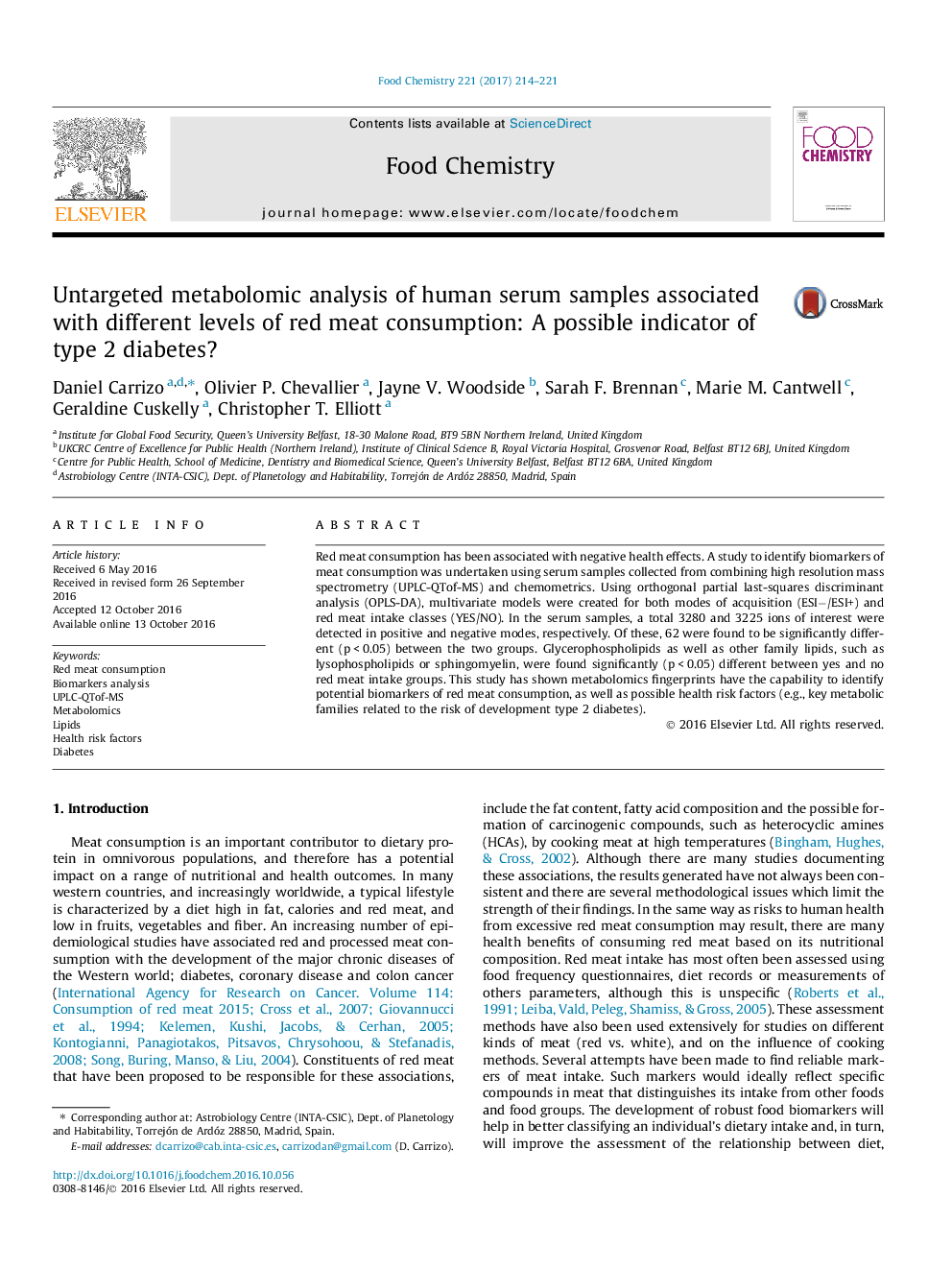| Article ID | Journal | Published Year | Pages | File Type |
|---|---|---|---|---|
| 5133731 | Food Chemistry | 2017 | 8 Pages |
â¢An intervention study was undertaken with a high/no red meat intake for six weeks.â¢High resolution mass spectrometry and chemometrics for biomarkers identification were used.â¢Identification of possible biomarkers of red meat consumption were found between groups.â¢Positive identification of type 2 diabetes biomarkers were found in the high red meat intake group.
Red meat consumption has been associated with negative health effects. A study to identify biomarkers of meat consumption was undertaken using serum samples collected from combining high resolution mass spectrometry (UPLC-QTof-MS) and chemometrics. Using orthogonal partial last-squares discriminant analysis (OPLS-DA), multivariate models were created for both modes of acquisition (ESIâ/ESI+) and red meat intake classes (YES/NO). In the serum samples, a total 3280 and 3225 ions of interest were detected in positive and negative modes, respectively. Of these, 62 were found to be significantly different (p < 0.05) between the two groups. Glycerophospholipids as well as other family lipids, such as lysophospholipids or sphingomyelin, were found significantly (p < 0.05) different between yes and no red meat intake groups. This study has shown metabolomics fingerprints have the capability to identify potential biomarkers of red meat consumption, as well as possible health risk factors (e.g., key metabolic families related to the risk of development type 2 diabetes).
